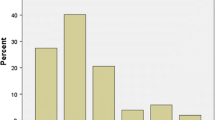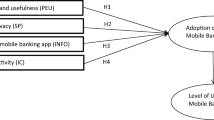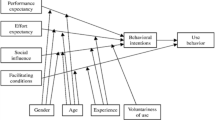Abstract
Mobile-banking (m-banking) is of particular interest to banks seeking to sustain their market share because of m-banking’s role attracting and retaining customers, especially young ones. This article reports on a study that applies concepts from behavioural economics (BE) and ‘nudging’ with the objective of promoting young people’s ongoing engagement with m-banking applications (that is, software designed to run on mobile devices, or m-banking ‘apps’ in common parlance). Insights and ideas for new features or refinements for m-banking apps were generated from discussions with a large class of senior marketing students, and then presented to m-banking managers and app designers to refine and to select two features for each of five constructs from BE: loss aversion, power of now, scarcity value, chunking and choice architecture. The relative desirability of these 10 m-banking features was investigated via a survey involving a pairwise-ranking exercise that was completed by 257 young m-banking consumers. Overall, the research reveals that m-banking app design can benefit from fundamentally different approaches (relative to traditional methodologies) that prioritise intuitive interfaces over non-intuitive-based designs, and, in particular, that BE and nudging can supply valuable insights and ideas for new features or refinements.

Similar content being viewed by others
References
Aggarwal, P. and Oostendorp, H.v. (2011) An attempt to automate the process of source evaluation. ACEEE International Journal on Communication 2 (2): 18–20.
Ajzen, I. (1985) From intentions to actions: A theory of planned behavior. In: J. Kuhl and J. Beckman (eds.) Action Control: From Cognition to Behavior. Berlin, Germany: Spinger-Verlag, pp. 11–39.
Al-Hawari, M., Ward, T. and Newby, L. (2009) The relationship between service quality and retention within the automated and traditional contexts of retail banking. Journal of Service Management 20 (4): 455–472.
Altman, M. (2011) Behavioural economics perspectives: Implications for policy and financial literacy. SEF Working Paper 11/2012. Wellington, New Zealand: Victoria University of Wellington.
Ariely, D. (2008) Predictably Irrational: The Hidden Forces that Shape our Decisions. New York: HarperCollins Publishers.
Berelowitz, M. and Palley, W. (2013) 13 Mobile Trends for 2013 and Beyond. New York: JWT Intelligence.
Bhattacherjee, A. (2001) Understanding information systems continuance: An expectation-confirmation model. MIS Quarterly 25 (3): 351–370.
BNZ (2012) Idea to market – Design document. In: F. Gardezi (ed.) Starting Out Experience. Marketing report ed. New Zealand: Bank of New Zealand.
Botici, A. et al. (2012) Sustainabilty challenges of residential reinfored-concrete panel buildings. Urbanism. Arhitectură. Construcţii 5 (2): 83–98.
Brown, I., Cajee, Z., Davies, D. and Stroebel, S. (2003) Cell phone banking: predictors of adoption in South Africa – An exploratory study. International Journal of Information Management 23 (5): 22–34.
Byrne, T., Amer, P., Fennessy, P. and Wickham, B. (2011) A preference-based approach to deriving breeding objectives – Applied to sheep breeding. Animal 6 (5): 778–788.
Dasgupta, S.R., Paul, R. and Fuloria, S. (2011) Factors affecting behavioral intentions towards mobile banking usage: Empirical evidence from India. Romanian Journal of Marketing 6 (1): 6–28.
Fishbein, M. and Ajzen, I. (1975) Belief, Attitude, Intention, and Behavior: An Introduction to Theory and Research. Reading, MA: Addison-Wesley.
Ford, R., Sumavsk, O., Clarke, A. and Thorsnes, P. (2014) Personalized energy priorities: A user-centric application for energy advice. In: A. Marcus (ed.) Design, User Experience, and Usabillity. User Experience Design for Everyday Life Applications and Services, Lecture Notes in Computer Science. Cham, Switzerland: Springer International Publishing, pp. 519; 542–553.
Fung, T.K. (2008) Banking with a personalized touch: Examining the impact of website customization on commitment. Journal of Electronic Commerce Research 9 (4): 296–309.
Gallup (2012) Customer Engagement: What’s Your Engagement Ratio? Gallup, Washington, http://www.gallup.com/services/176297/customer-engagement-core-strategy.aspx, accessed 15 December 2015.
Grant, P.S., Stiehler, B. and Boon, E. (2013) Through bubbles and crises: An analysis of the journal of financial services marketing from 2000 to 2012. Journal of Financial Services Marketing 18 (4): 260–270.
Green, P.E., Krieger, A.M. and Wind, Y.J. (2001) Thirty years of conjoint analysis: Reflections and prospects. Interfaces 31 (3 sup): S56–S73.
Gu, J.-C., Lee, S.-C. and Suh, Y.-H. (2009) Determinants of behavioral intention to mobile banking. Expert Systems with Applications 36 (9): 11605–11616.
Guinea, A.O.d. and Markus, M.L. (2009) Why break the habit of a lifetime? Rethinking the roles of Intenion, habit, and emotion in continuing information technology use. MIS Quarterly 33 (3): 433–444.
Ha, K.-H., Canedoli, A., Baur, A.W. and Bick, M. (2012) Mobile banking – Insights on its increasing relevance and most common drivers of adoption. Electronic Markets 22 (4): 217–227.
Hansen, P., Kergozou, N., Knowles, S. and Thorsnes, P. (2014) Developing countries in need: Which characteristics appeal most to people when donating money? Journal of Development Studies 50 (11): 1494–1509.
Hansen, P. and Ombler, F. (2008) A new method for scoring multi-attribute value models using pairwise rankings of alternatives. Journal of Multi-Criteria Decision Analysis 15 (3–4): 87–107.
Harrison, T. (2013) Editorial. Journal of Financial Services Marketing 18 (4): 257–259.
Hollebeek, L.D. (2011) Dymystifying customer brand engagement: Exploring the loyalty nexus. Journal of Marketing Management 27 (7–8): 785–807.
Hong, S., Thong, J.Y.L. and Tam, K.Y. (2006) Understanding continued information technology usage behavior: A comparison of three models in the context of mobile internet. Decision Support Systems 42 (3): 1819–1834.
IPA (2009) Behavioural Economics: red hot or red herring? IPA.London. http://www.ipa.co.uk/page/behavioural-economics-site-ipa-publications-.Vq54voRGF7Y, accessed 15 December 2015.
Ji-yeon, H. (2014) The systemization of waste landfill site selection process utilizing GIS. Korea Geospatial Information Science 22 (3): 21–30.
Kang, H., Lee, M.J. and Lee, J.K. (2012) Are you still with us? A study of the post-adoption determinants of sustained use of mobile-banking services. Journal of Organizational Computing and Electronic Commerce 22 (2): 132–159.
Khaneman, D. (2011) Thinking, Fast and Slow. Australia: Penguin Books.
Kim, H.-W., Chan, H.C. and Chan, Y.P. (2007) A balanced thinking – Feelings model of information systems continuance. International Journal of Human-Computer Studies 65 (6): 511–525.
Koenig-Lewis, N., Palmer, A. and Moll, A. (2010) Predicting young consumers’ take up of mobile banking services. International Journal of Bank Marketing 28 (5): 410–432.
Laukkanen, T. (2007) Internet vs mobile banking: Comparing customer value perceptions. Business Process Management Journal 13 (6): 788–797.
Laurn, P. and Lin, H.H. (2005) Toward an understanding of the behavioural intention to use mobile banking. Computers in Human Behaviour 21 (6): 873–891.
Lee, M.S.Y., McGoldrick, P.J., Kelling, K.A. and Doherty, J. (2003a) Using ZMET to explore barriers to the adoption of 3 G mobile banking services. International Journal of Retail & Distribution Management 31 (6/7): 340–349.
Lee, Y., Kozar, K.A. and Larsen, K.R.T. (2003b) e Technology Acceptance Model: Past, Present, and Future. Communications of the Association for Information Systems Vol. 12, http://aisel.aisnet.org/cais/vol12/iss1/50, accessed 15 December 2015.
Liao, C., Chen, J.-L. and Yen, D.C. (2007) Theory of planning behavior (TPB) and customer satisfaction in the continued use of e-service: An integrated model. Computers in Human Behavior 23 (6): 2804–2822.
Lunt, J. and Staves, M. (2011) Nudge, nudge think, think. The Safety & Health Practitioner 29 (11): 41–44.
Mahatanankoon, P., Wen, H.J. and Lim, B. (2005) Consumer-based m-commerce: Exploring consumer perception of mobile applications. Computer Standards & Interfaces 27 (4): 347–357.
Mas, I. and Kumar, K. (2008) Banking on Mobiles: Why, How for Whom? Focus Note. Washington DC: CGAP.
Pedersen, P.E. and Nysveen, H. (2003) Usefulness and self-expressiveness: Extending TAM to explain the adoption of a mobile parking service. Paper presented at the 6th Bled eCommerce Conference eTransformation; 9–11 June, Bled.
Persaud, A. and Azhar, I. (2012) Innovative mobile marketing via smartphones: Are consumers ready? Marketing Intelligence & Planning 30 (4): 418–443.
Ruhland, J. (2006) Strategic mobilization: What strategic management can learn from soical movement research. Management 11 (44): 23–31.
Sims, P. (2013) Little Bets. New York: Simon & Schuster.
Smith, K. and Fennessy, P. (2014) Utilizing conjoint analysis to develop breeding objectives for the improvement of pasture species for contrasting environments when the relative values of individual traits are difficult to asess. Sustainable Agriculture Research 3 (2): 44–55.
Suoranta, M. and Mattila, M. (2004) Mobile banking and consumer behaviour: New insights into the diffusion pattern. Journal of Financial Services 8 (4): 354–366.
Thaler, R.H. and Sunstein, C.R. (2009) Nudge Improving Decisions About Health, Wealth and Happiness. Great Britain, UK: Penguin Group.
Wilska, T.-A. (2003) Mobile phone use as part of young people’s consumption styles. Journal of Consumer Policy 26 (4): 441–463.
Zhou, T. (2011) An empirical examination of users’ post-adoption behaviour of mobile services. Behaviour & Information Technology 30 (2): 241–250.
Author information
Authors and Affiliations
Corresponding author
Additional information
3has recently completed her Masters of Business degree at the University of Otago.
Appendix
Appendix
Rights and permissions
About this article
Cite this article
Wijland, R., Hansen, P. & Gardezi, F. Mobile nudging: Youth engagement with banking apps. J Financ Serv Mark 21, 51–63 (2016). https://doi.org/10.1057/fsm.2016.1
Received:
Revised:
Published:
Issue Date:
DOI: https://doi.org/10.1057/fsm.2016.1




